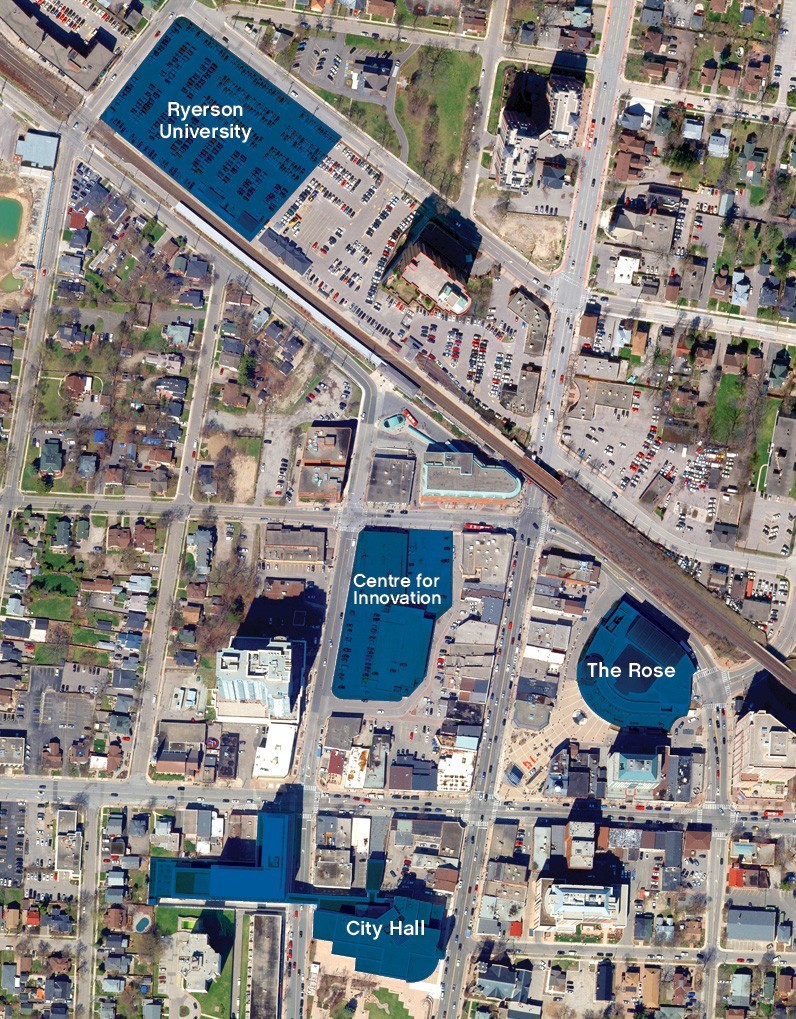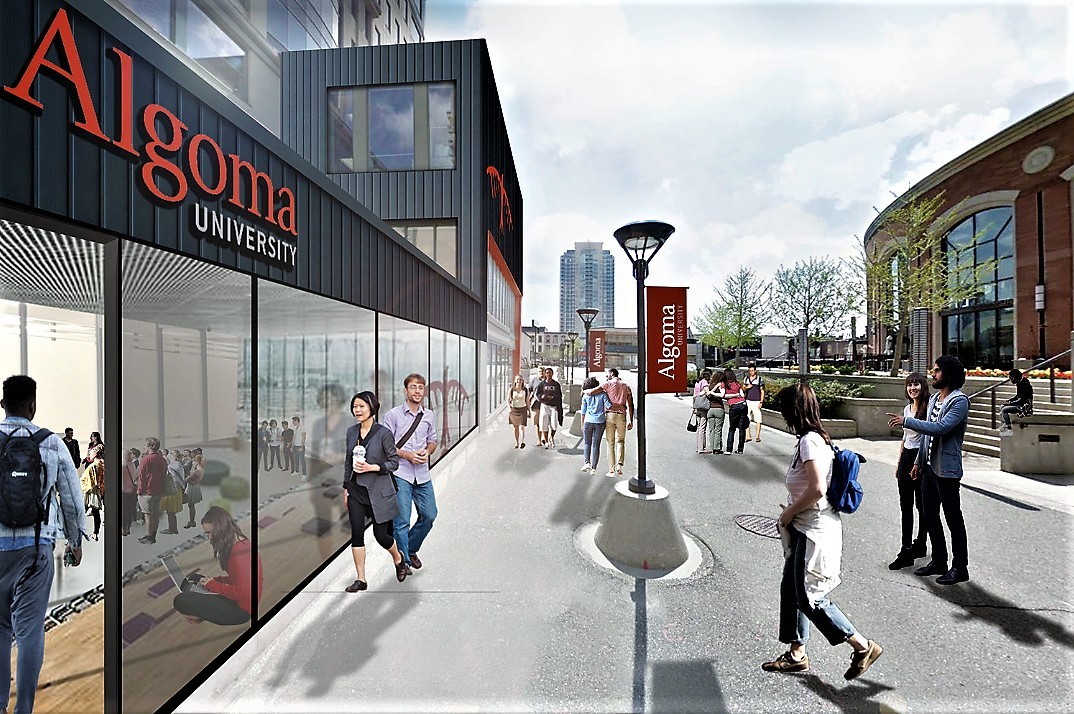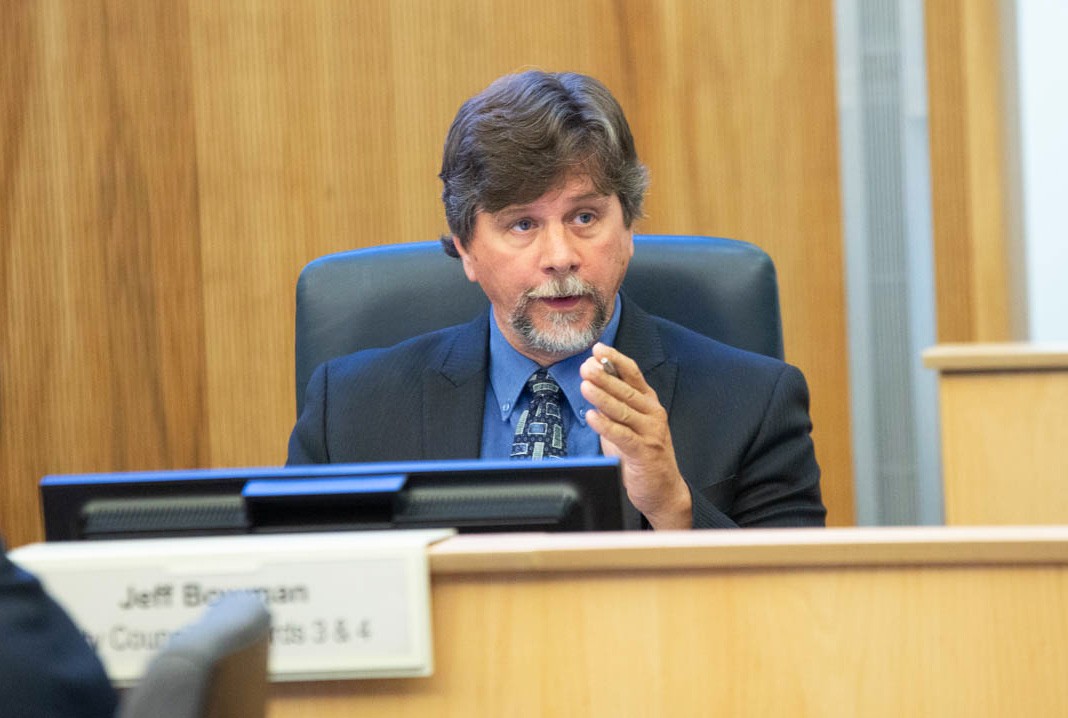
City plans for BramptonU continue to avoid crucial questions
The City of Brampton has unveiled plans for its proposed university, after months of little more than vague answers to questions about the plausibility of the campus.
On July 24, the city shared a preview of the key strategic elements for a proposal to bring a fully accredited university to Brampton, including details about the potential economic benefits, the university’s future governance and the academic areas of study the post-secondary institution could offer.
The information, which will soon be used to back up a proposal for funding from the province, offers the first concrete ideas around the project. Although there hasn’t been any specific location designated for the future campus, the city’s downtown core could see badly needed help that the mega-investment into post-secondary education would bring. However, the plausibility of a university backed by a municipality remains up in the air.

Before funding was cancelled by the PC government, a Ryerson campus was proposed for Brampton's downtown. Now the city is pursuing BramptonU.
The goal is for the university to be opened by 2040 with approximately 30,000 students.
How Brampton plans to skip the queue on accreditation, a process that took Algoma from 1994 to 2007, is also unclear. What the university will be known for or how it will gain eventual certification to offer degrees in certain programs are unexplained as well. Most new post-secondary institutions have to move from small, retail-style offerings to colleges and finally, fully accredited degree-granting universities sanctioned by the province.
Funding is another large question that has been left unanswered by the city. The ambiguous answers to FAQs posted on the BramptonU website state that the City has set aside $300,000 from the budget of the Chief Administrative Officer, but it’s unclear what this is for. Staff are also looking for a model that will allow the university to be entirely self-funding over time.
To help build the university, the City is looking to the province. The Ford government hasn’t been keen on spending in the education sector. Chris Glover, official NDP critic of Colleges and Universities of Ontario said he hopes the City can “twist their arm” on the matter.
Doug Ford’s government previously pulled funding for a Ryerson University satellite campus that was in partnership with Sheridan College in the city’s downtown, in a space right next to the GO station. The City of Brampton lost $90 million in funding that the previous Liberal government had committed, a decision that also impacted Milton and Markham, which also lost the funding for new universities the previous Liberal government had pledged.
However, last month the Ontario government announced support for York University’s Markham Centre Campus. Construction for the new school will start this month and will expect its first students in 2023. The campus will be the first taxpayer assisted university in the area, funding from the post-secondary institution, York Region, the City of Markham and private donors is what will lift this $275.5M project off the ground.
The province said it will provide funding linked to the number of students enrolled in 2023.
The partnership between Brampton, and either Ryerson or Algoma, which would be a typical route for a city to open a university, still remains to be seen. It’s unlikely that either university, following their substantial investment commitments to help build post-secondary education here, would be happy about being cut out of any plan for a full campus.
After the Ford government suddenly cancelled the $90 million of funding for the downtown campus in October of 2018, Ryerson informed The Pointer that it had no choice but to withdraw from the centrepiece downtown campus project that had been set to be built on the selected site next to the GO station.
Ryerson already runs its Chang School of Continuing Education out of its downtown location and is currently working with city hall to create an “Innovation Zone” which is part of the University’s larger network to support the creation of businesses and ideas that can become full functioning economic ventures in the city.
The Innovation Zone will be part of Brampton’s larger “Innovation District” planned to house other entrepreneurial and tech-based initiatives. These initiatives will be located in the planned Centre for Innovation.
The city’s two existing university partners offer a variety of programs in the health, business and science fields, with Algoma recently announcing a major plan to expand its downtown presence into a much larger campus next to the Rose Theatre, for which council committed $7.3 million over three years in August 2019, on top of the university’s $27.09 million contribution.
Another concern is where the university will be located and how the city can provide adequate housing for students.
For a city like Brampton, already struggling with illegal secondary units, poor housing conditions and inflated rental rates, an influx of new students will not help the situation. The city currently plays host to a campus for Sheridan College, Algoma University and some educational courses offered by Ryerson University. In addition, its 501/501A Zum buses, servicing York University, are the most crowded in the city, with an average of 20,515 weekday riders. Others in the city attend colleges and universities located across the GTA, such as U of T’s Mississauga campus.

Algoma University has plans to expand its offerings in Brampton.
Students are among the renting population most vulnerable to living in these non-traditional and, at times, unsafe spaces, partly due to their lack of experience and as a result of budget pressures.
Councillor Jeff Bowman, vocal on the issue of illegal secondary suites, told The Pointer BramptonU would “absolutely” make the issue of illegal secondary suites worse. He added that, with the high cost of tuition universities and colleges charge international students, of which there are many in Brampton, they should be mandated to provide housing for enrolled undergraduates.
“Why is the onus falling on the city?” he asked.
On BramptonU, Bowman was blunt. “We have no funding announcement and no approval, but we’re doing all these communications,” he said, adding that he understood the need to invest resources to attract any possible provincial investment.
Another unanswered question is how the City will pay for a share of the cost, if that’s a condition the province demands, similar to its position on new hospitals. Brampton is on a terrible financial footing to provide its share for either cost, and Mayor Patrick Brown has halted tax increases the last two years, while cutting about $200 million from the city’s 2020 capital budget, already delaying and postponing badly needed projects. It’s left no room for the City to allocate revenues for a range of local features that would dramatically elevate Brampton’s standing. Brown has instead repeatedly called on Ford and his PC government to come to the rescue, something that now seems unlikely as Queen’s Park struggles with mounting debt made worse by the ongoing pandemic, which was already unsustainable and now stands at a staggering $360 billion, the largest subnational debt in the world. It’s not an ideal time for Brampton to be asking for help, especially when it has chosen a tax policy under Brown that has shirked all responsibility to pay for any of its own costs.
It’s clear that with at least 650,000 residents, projected to reach about 900,000 by 2040, that Brampton families need a comprehensive degree-granting campus with a university that offers a range of educational options for students. While much smaller centres, such as Kitchener-Waterloo, have more than one full university campus, Brampton, which is more than double the size, remains without one.

Councillor Jeff Bowman
“One of the things that has impressed me the most about my tours of the universities and colleges across the province is just how important they are to the economic development (of) regions,” said Glover.
According to the City’s documents, BramptonU would bring $1.5 billion annually into the local economy, and up to $7 billion in total economic impact. These numbers are based on “a range of economic impact studies undertaken in the last ten years across Canada,” according to the staff reports.
This idea that post-secondary institutions bring massive economic prospects and jobs to local economies is a key piece of the BramptonU proposal. The City argues a university will encourage local growth and spur business investment.
In the City’s 2040 Vision plan the university plays a key role in the development of facilities and infrastructure. The reports said Brampton University “will act as a catalyst” in growing the economies in the prominent sectors.
Email: [email protected]
Twitter: taasha__15
COVID-19 is impacting all Canadians. At a time when vital public information is needed by everyone, The Pointer has taken down our paywall on all stories relating to the pandemic and those of public interest to ensure every resident of Brampton and Mississauga has access to the facts. For those who are able, we encourage you to consider a subscription. This will help us report on important public interest issues the community needs to know about now more than ever. You can register for a 30-day free trial HERE. Thereafter, The Pointer will charge $10 a month and you can cancel any time right on the website. Thank you.
Submit a correction about this story


